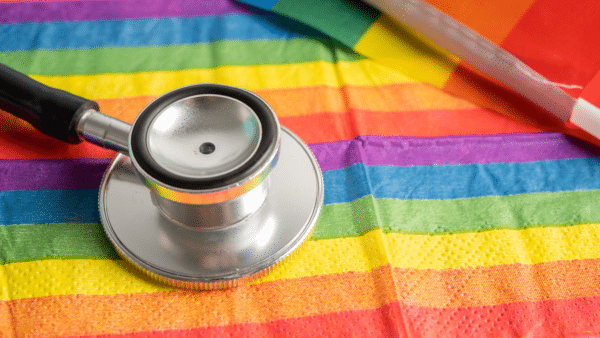
When a generalist physician and a specialist successfully collaborate, it’s a seamless handoff that ensures patients receive continuous care. The generalist doctor acts as the primary quarterback, identifying an issue that requires deeper expertise and making a referral. The specialist then steps in, provides targeted treatment, and communicates their findings back.
However, reality often falls short of this ideal. In a recent Sermo poll, only 14% of physicians described the communication between generalists and specialists as “seamless and efficient.” The vast majority reported a more disjointed experience. 43% said it was “generally smooth with minor delays,” while a combined 41% found it “often fragmented,” “inconsistent,” or even “poor and frustrating.”
This isn’t just an administrative headache; it has real-world consequences. Delayed test results, unclear treatment plans and missed follow-ups can lead to adverse events and duplicated efforts, driving up costs for everyone. For physicians, it can waste time that could be spent on patient care. It’s “nice when a specialist consult comes [through] in a timely and constructive manner,” as one anesthesiologist on Sermo puts it, but “very irritating when you can’t get either a straight answer or any answer at all.”
If you’d like to collaborate better, here’s what you should know about the biggest barriers to effective communication, and best practices according to real physicians.
Communication between specialist and generalist doctors remains inconsistent
A generalist physician often has a long-term, holistic view of a patient’s health, while a specialist provides deep, focused expertise on a specific condition. When these two perspectives are successfully integrated, patients benefit from a comprehensive care plan that addresses all of their needs.
Some physicians experience smooth collaboration, but for others, communication is inconsistent, the Sermo poll revealed. When asked how often they receive timely feedback from specialists after a referral, 11% of physicians said “always” and 36% said “often.” However, the remaining respondents receive timely feedback “sometimes” (36%) “rarely” (11%) or “almost never” (5%).
These inconsistencies can create ripple effects. A general practice physician waiting on a cardiologist’s report may be unable to adjust a patient’s medication. A specialist who doesn’t receive a complete patient history might order redundant tests. One gastroenterologist on Sermo describes their “quite frustrating” personal experience: “My communication is based primarily on personal acquaintances with colleagues; there’s no institutionalized system of communication.”
The biggest barriers to generalist–specialist communication
Multiple issues can lead to breakdowns in communication between generalists and specialists. In the Sermo poll, physicians identified the two predominant causes as time constraints (39%) and a lack of EHR interoperability (26%).
To chase down a colleague for a quick update, navigate complex phone trees or wait on hold can feel impossible amid back-to-back appointments. This pressure is compounded by the fact that generalist and specialist doctors often operate on different schedules and in different settings, making synchronous communication a logistical challenge.
At the same time, the very tools designed to streamline communication—Electronic Health Records (EHR)—are frequently a source of frustration. When a generalist physician and a specialist use different, incompatible EHR systems, sharing patient records becomes a cumbersome process of printing, faxing and scanning. This digital disconnect not only wastes time but also increases the risk of critical information being lost in translation.
Other significant barriers cited by physicians include unclear referral protocols (17%) and a lack of established relationships or trust (8%). Without standardized processes, referrals can lack essential information, forcing specialists to hunt for details. And without a foundation of mutual respect, physicians may be hesitant to pick up the phone for a quick consultation, fearing they are interrupting or overstepping.
A cultural shift may also be at play. “When I first started in practice… I developed more of a friendship with my specialists in the Big City,” recounts a family medicine doctor on Sermo. “We visited and got to know each other… We sent Christmas and birthday cards.”
Today, that level of personal connection doesn’t exist, they explained. “Now… I don’t know if I could get a specialist on the phone let alone obtain advice,” they lament. “The profession has taken on an air of coldness and detachment.”
Best practices for effective collaboration for doctors
In light of the challenges, many physicians have developed strategies to foster better collaboration. When polled on their preferred method for communication, Sermo members showed a preference for direct and immediate channels. Phone calls were the top choice, capturing 37% of votes.
One GP member reflected on the advantages of speaking by phone. “Referral templates and EHR integrations are valuable because they reduce the risk of missing essential information and create a consistent standard for handoffs,” they acknowledge. “Yet, I’ve often found that nothing replaces simply picking up the phone or sending a direct message when the case is complex or time-sensitive. That personal touch not only clarifies the immediate issue but also builds trust between colleagues.”
Integrated EHR messaging came in second with 22% of votes, highlighting a desire for tools that are embedded within a physician’s existing workflow. The authors of one study on EHR use and collaboration argued that EHR use can help or hinder communication, depending on the context. Issues can arise when systems don’t allow for synchronous patient record use or burden physicians with information overload, the authors noted.
Communication doesn’t hinge on medium alone. A psychiatrist on Sermo observed that handoffs often falter due to “cultural disconnects more than technical issues.” They argued that while referral templates and EHR integrations help, they cannot replace the trust built through direct relationships. A “human connection,” they concluded, is what “truly prevents patients from falling through the cracks.”
What doctors want to see next
Sermo members weighed in on what’s needed to improve collaboration. It’s not a single silver bullet, but a combination of better tools and clearer processes. According to the Sermo poll, the top three improvements members want are a centralized communication platform (35%), standardized referral and handoff protocols (26%) and more opportunities to build relationships with specialists (19%).
A centralized platform could solve the EHR interoperability problem, creating a single, secure channel where generalist and specialist doctors can share records, send messages and track patient progress. “I strongly believe in the US we need a publicly funded centralized electronic healthcare system,” urges a psychiatrist on Sermo. Such a system, they argue, would enable seamless chart reviews and cut down on the costs of retraining providers on different EHRs.
Standardized protocols would ensure that every referral contains the necessary clinical information, while cross-specialty team meetings, shared case reviews or informal networking events could foster relationship building.
What can doctors do to improve communication right now?
Physicians alone can’t solve this issue. Still, you can take proactive steps today to strengthen communication within your network:
- Advocate for change: Raise the issue with leadership in your hospital or organization. Use data, like the poll results in this article, to make a business case for investing in better communication tools or standardized protocols.
- Create your own standards: If your organization lacks formal protocols, work with the specialists you refer to most often to create your own. A simple, agreed-upon referral template can save everyone time and reduce errors.
- Learn communication preferences: Don’t assume everyone prefers the same method. One specialist might respond fastest to a direct text, while another prefers an EHR message. A quick conversation to ask, “What’s the best way to reach you for an urgent question?” can make a difference.
- Establish feedback loops: Make it a habit to close the loop. If you’re a generalist, let the specialist know the outcome of their recommendation. If you’re a specialist, make sure the referring physician receives your report promptly.
- Connect with peers: Platforms like Sermo offer a space to connect with physicians across more than 90 specialties. You can share challenging patient cases, get quick answers and build professional relationships that extend beyond your immediate geographic area. A discussion on Sermo might just lead to a new connection that benefits you and your patients for years to come.
A new path for physician collaboration
Seamless collaboration between generalist and specialist requires both technical solutions and human connection. Sermo members maintain that while better technology like interoperable EHRs and centralized platforms are crucial, they are not enough. The strongest collaborations require interpersonal trust and respect.
By advocating for better systems, standardizing processes and consciously investing in professional relationships, you can help improve communication with your colleagues. Ultimately, when generalist and specialist doctors communicate effectively, it’s the patient who reaps the greatest reward.















